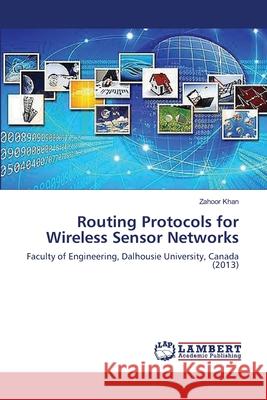Routing Protocols for Wireless Sensor Networks » książka
Routing Protocols for Wireless Sensor Networks
ISBN-13: 9783659467837 / Angielski / Miękka / 2013 / 92 str.
Reducing the energy consumption of available resources is still a problem to be solved in Wireless Sensor Networks (WSNs). Many types of existing routing protocols are developed to save power consumption. In these protocols, cluster-based routing protocols are found to be more energy efficient. A cluster head is selected to aggregate the data received from root nodes and forwards these data to the base station in cluster-based routing. The selection of cluster heads should be efficient to save energy. In this book, a detailed discussion of a new routing protocol (AZR-LEACH) is given after a brief discussion of general routing protocols used for WSNs. In AZR-LEACH protocol, static clustering is used for the efficient selection of cluster heads. The AZR-LEACH routing protocol works efficiently in large as well as small areas. A large sensor field is divided into rectangular clusters for an optimal number of cluster head selection. Then these rectangular clusters are further grouped into zones for efficient communication between cluster heads and a base station.
Reducing the energy consumption of available resources is still a problem to be solved in Wireless Sensor Networks (WSNs). Many types of existing routing protocols are developed to save power consumption. In these protocols, cluster-based routing protocols are found to be more energy efficient. A cluster head is selected to aggregate the data received from root nodes and forwards these data to the base station in cluster-based routing. The selection of cluster heads should be efficient to save energy. In this book, a detailed discussion of a new routing protocol (AZR-LEACH) is given after a brief discussion of general routing protocols used for WSNs. In AZR-LEACH protocol, static clustering is used for the efficient selection of cluster heads. The AZR-LEACH routing protocol works efficiently in large as well as small areas. A large sensor field is divided into rectangular clusters for an optimal number of cluster head selection. Then these rectangular clusters are further grouped into zones for efficient communication between cluster heads and a base station.











